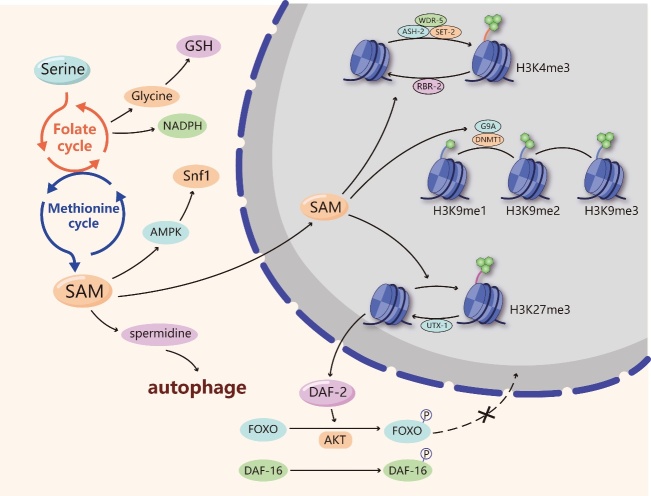Figure 3.
Serine and senescence. Serine produces various metabolites, such as NADPH, glutathione (GSH) and S-adenosylmethionine (SAM), by participating in one-carbon metabolism that includes the folate cycle and the methionine cycle. NADPH and GSH can hinder senescence by exerting antioxidant function. SAM enters the nucleus and is involved in the methylation of histone H3 lysine 4 (H3K4), histone 3 lysine 9 (H3K9) and histone H3 lysine 27 (H3K27). High levels of H3K4me3 adversely affect the longevity, while H3K9me1 and H3K27me3 are beneficial to longevity. Besides, the demethylase UTX-1 can remove the transcription repressive marker of H3K27me3 and increase the gene expression of the insulin/insulin-like growth factor (IGF)-1 receptor homolog DAF-2. DAF-2 induces the phosphorylation of FOXO/DAF-16 proteins through the AKT pathway, hindering their ability to enter the nucleus and activate anti-aging genes. SAM could also extend lifespan via activating the universal energy-sensing regulator Snf1 induced by AMP-activated protein kinase (AMPK). In addition, SAM can be involved in spermidine synthesis. Spermidine depends on functional autophagy to increase the autophagic turnover of cytoplasmic organelles or long-lived proteins.

